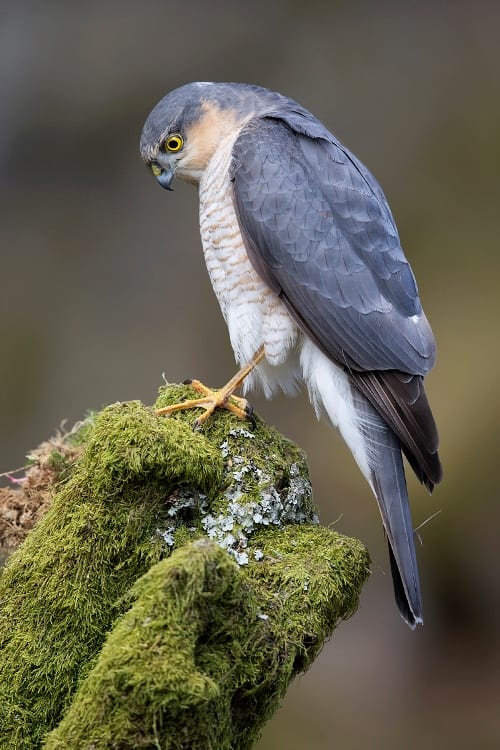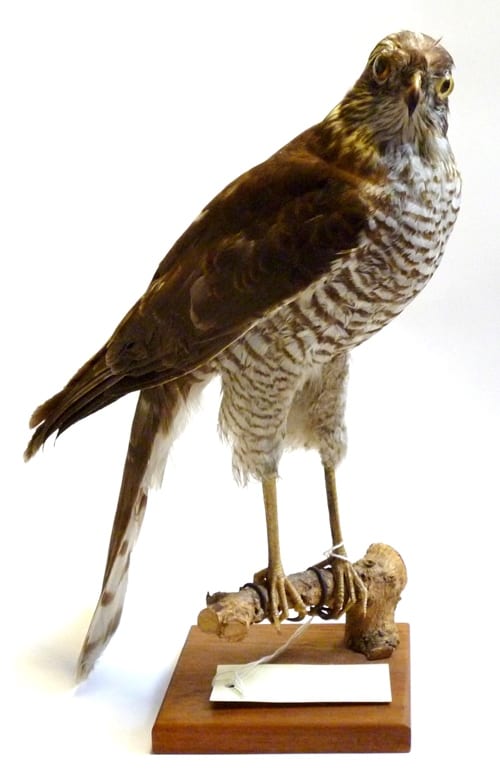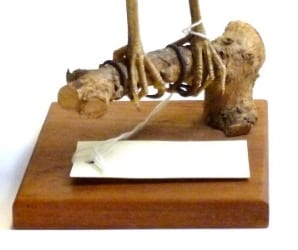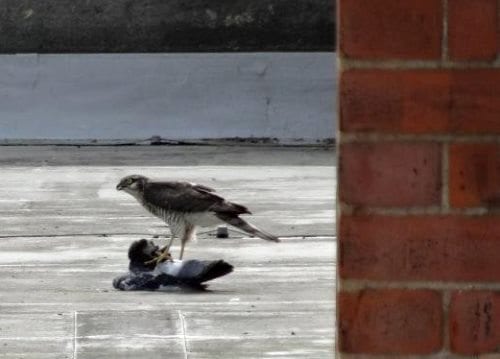Specimen of the week 215: the sparrowhawk taxidermy
By Will J Richard, on 23 November 2015
Hello zoo-fans. Will Richard here, throwing words at the page to bring you this specimen of the week. And what a specimen I’ve chosen. Graceful, elegant, deadly and now stuffed. Slightly wonkily. Case 17’s finest…
**the sparrowhawk taxidermy**
1) Sparrow(and lots of other birds)hawks
The Eurasian sparrowhawk (Accipiter nisus) is found throughout the temperate and subtropical regions of Africa, Asia and Europe, with Birdlife International estimating the global population at between 2.2 and 3.3 million birds. They seem to survive in almost any habitat, but thrive in open woodlands where they can use their agility to maximum effect. As their name suggests, they specialise in hunting smaller birds (though not necessarily sparrows) by hiding in cover and ambushing their prey. They pursue them over short distances at speeds of up to 50 kilometres an hour and if successful the hawk will pluck the bird directly from the air with its sharp talons (three facing forwards and one facing back) or seek to pin them down before beginning to feed. Like most successful predators, however, they take a meal where they can get it: other small vertebrates, large invertebrates and carrion all make a good dinner.
2) Feathered friends
Pairs maintain territories, the size of which is primarily determined by the availability of food. Fewer meals, fewer hawks. And like most birds of prey, the female is decidedly larger, weighing approximately three times as much as the male. She can, therefore, hunt comparatively larger prey (think crow sized) and takes a leading role in defending their turf. As well as being much bigger, the two sexes are different colours, making it easy to tell them apart. Females are speckled brown whereas the males are pinky-grey. Ours is clearly a female. As urban birders in the UK we really only have two species of bird of prey to look out for (you might see a kestrel but it’s pretty unlikely). It is common (for me) to catch a glimpse of a male sparrowhawk and confuse him for a peregrine falcon (and vice versa) though you can usually clear it up if you’ve got long enough to see how big the bird is or whether it has bright yellow eyes. Peregrines are obviously larger and don’t.
3) The early bird…
Once paired and settled, the birds mate and the female lays up to six eggs with two days between each one’s arrival. Mum will incubate these for about a month, while Dad provides dinner, and the chicks will hatch sequentially in the order in which their eggs were laid. This staggered reproduction is thought to be an adaptation for surviving on an unreliable diet. Huh? (This bit’s pretty bleak so feel free to skip ahead.)
As the chicks hatch one after the other, the elder chicks have a head start over their younger siblings, feeding first and growing fastest. If there is not enough food to go round then the youngest will be unable to compete and starve quickly, without impacting the health of the others. Through this mechanism the brood is reduced to a realistic size without compromising the chances of those that survive. In times of plenty even the runts get fed.
4) Flying the nest
Those (that eat) grow quickly and fledge after another month. For the next few weeks they return to the nest at night and to feed, before seeking to establish their own territory. Only one in three chicks will survive the first year as their small size drastically reduces their hunting potential. Of those that make it to full size, about 30% die each year: they are mostly old or unfit animals that starve. The oldest recorded individual was over 17 years, but most don’t get past four.

Sparrowhawk male. Image by Steve Ward; CC-BY-2.0; via Wikimedia Commons
5) That’s nature
You might worry about the impact that sparrowhawks have on small bird populations. Well – don’t. In the vast majority of cases no correlation has been established between the abundance of small bird species and the hawk numbers. And why would there be? As little as 1/15th of prey species chicks’ need to survive in order to keep their numbers stable. In fact predators pick out the weak and diseased individuals and help to keep the population healthy. And we must remember that in the three cases (bullfinches, tree sparrows and reed buntings) where there appears to be some degree of impact, correlation is not necessarily causation.
Both ice-cream sales and shark attacks go up in the summer, for example …
References:
BirdLife International. 2015. European Red List of Birds. Office for Official Publications of the European Communities, Luxembourg. (http://www.birdlife.org/datazone/speciesfactsheet.php?id=3455)
British Trust for Ornithology – Sparrowhawk (Accipiter nisus)
Will Richard is Visitor Services Assistant at the Grant Museum of Zoology
 Close
Close




